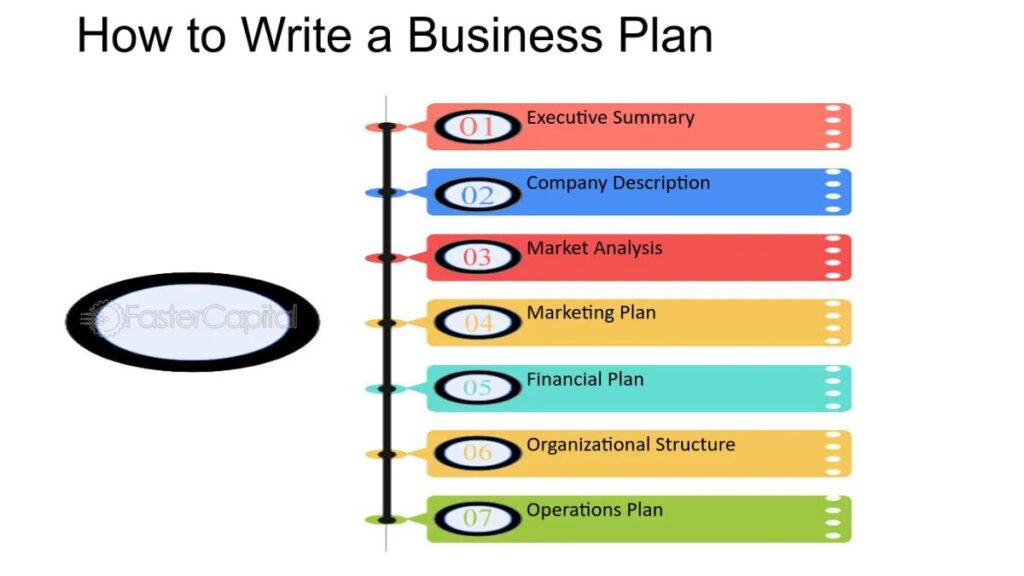Creating a business plan is a crucial first step for any entrepreneur seeking to turn their idea into a successful enterprise. Whether you’re starting a new business or refining an existing one, a well-crafted business plan serves as a roadmap, helping guide you toward your goals. It outlines your business’s mission, vision, target market, competitive advantages, and financial projections, ensuring you’re prepared to make informed decisions. In this guide, we will walk you through the process of creating a winning business plan, from understanding the essential components to writing and presenting it effectively.
Why a Business Plan is Essential for Success
Before diving into the specifics of creating a business plan, it’s important to understand why it’s such a vital tool. A business plan is not just a document to show potential investors or lenders; it’s a strategic blueprint for your business’s growth and development. It forces you to define your business goals clearly and map out a strategy to achieve them. A well-thought-out plan helps identify potential challenges, spot new opportunities, and establish realistic financial forecasts. It also serves as a communication tool to align your team and stakeholders with your vision.
Step 1: Executive Summary – Your Business in a Nutshell
The executive summary is the first section of your business plan, yet it’s typically written last. It’s a brief overview of your business, summarizing key information from the other sections of the plan. Think of it as your business’s elevator pitch. This section should answer the following questions:
- What is your business?
- What are its goals and objectives?
- What products or services will you offer?
- What is the target market?
- How will your business make money?
Although the executive summary appears first in the business plan, it should be concise—ideally one to two pages long. This is your opportunity to grab the reader’s attention, so make sure it’s compelling and highlights the most important aspects of your business. A strong executive summary will set the tone for the rest of your business plan.
Step 2: Company Description – Defining Your Business
The company description provides a more detailed overview of your business, explaining what it does, who it serves, and how it operates. This section should answer the following questions:
- What type of business are you starting? (Retail, service, manufacturing, etc.)
- What problem does your business solve?
- Who are your target customers?
- What makes your business unique or innovative?
- What is your company’s mission statement?
This section helps potential investors or partners understand the fundamentals of your business. It also establishes the foundation for your strategic plan, showing how your business fits into the larger industry landscape. Be sure to clearly communicate the value proposition that sets you apart from competitors.
Step 3: Market Research – Understanding Your Audience
A key element of any business plan is market research. Before launching a new product or service, you need to understand your market’s demand, potential customer base, and competitive landscape. This research forms the basis of your business strategies, helping you create a solid marketing and sales plan.
Your market research section should include:
- Target Market: Define your ideal customers. Are they individuals or businesses? What is their age, gender, income, interests, and buying habits? Segment your audience based on demographics, psychographics, and behavior.
- Market Size and Growth Potential: Provide data to support the size of the market you’re targeting and its expected growth. Use statistics and industry reports to validate your assumptions.
- Competitive Analysis: Identify your competitors and assess their strengths and weaknesses. This information will help you determine how to position your business to stand out and appeal to customers.
- Trends and Opportunities: Highlight any industry trends, emerging technologies, or market shifts that could impact your business. Identify opportunities for growth and expansion.
Thorough market research will help you craft a strategy that resonates with your target audience and increases your chances of success.
Step 4: Organization and Management – Building a Strong Team
This section of the business plan outlines the structure of your company and introduces key members of your team. Whether you’re a solopreneur or part of a larger organization, understanding the roles and responsibilities of each member is crucial for business operations.
Your organizational and management plan should include:
- Business Structure: Will your business be a sole proprietorship, partnership, LLC, or corporation? Each structure has different legal and tax implications, so choose the one that best aligns with your goals.
- Key Team Members: If you have co-founders, managers, or advisors, include brief bios that highlight their qualifications and roles. Explain how their expertise contributes to the success of the business.
- Hiring Plan: If your business is in its early stages, outline the roles you plan to fill in the future. Include a timeline for hiring and any specific skills you’ll be looking for.
This section is essential because it demonstrates to investors that you have a strong, capable team in place to execute your business plan effectively.
Step 5: Products and Services – What You’re Offering
In this section, you’ll explain the products or services your business will offer. Be detailed, focusing on the features, benefits, and value that your offerings provide to customers. Include information about the following:
- Product/Service Description: What is your product or service, and how does it solve your target customers’ problems? Describe its features, benefits, and how it differs from competitors.
- Development Stage: If you’re still in the process of developing your product or service, provide a timeline for when it will be ready for market.
- Pricing Strategy: Outline your pricing model. Will you offer discounts, subscriptions, or premium pricing? Be sure to justify your pricing based on market research and competitor analysis.
- Sales and Distribution Plan: Explain how you plan to deliver your product or service to customers. Will you sell online, in-person, through retailers, or via direct sales?
Clearly articulating what you’re selling is critical, as this section addresses the heart of your business and how it generates revenue.
Step 6: Marketing and Sales Strategy – Reaching Your Customers
A well-crafted marketing and sales strategy is essential for attracting and retaining customers. This section outlines how you will promote your business, acquire customers, and drive sales.
Your marketing and sales strategy should include:
- Marketing Plan: Define your marketing goals and the channels you’ll use to reach your audience (e.g., digital marketing, traditional advertising, social media, SEO, etc.). Specify your budget and timelines for each campaign.
- Sales Plan: Explain how you will convert leads into customers. Will you use an inbound or outbound sales model? What steps will your sales team take to close deals and drive revenue?
- Customer Retention: Discuss how you will keep customers coming back. Will you offer loyalty programs, follow-up services, or personalized experiences?
A comprehensive marketing and sales plan ensures that you have a clear strategy for growing your customer base and sustaining long-term success.
Step 7: Financial Projections – Making the Numbers Work
Financial projections are an essential part of any business plan, as they provide a roadmap for managing your business’s finances. Investors and lenders rely on financial projections to assess the viability of your business and the potential return on their investment. This section should include:
- Revenue Model: Explain how your business will make money. Include details about pricing, sales volume, and any other revenue streams.
- Profit and Loss Statement: Project your income, expenses, and profits for the next 1-3 years. This will give you insight into whether your business is financially sustainable.
- Cash Flow Statement: Estimate the cash inflows and outflows of your business. Understanding cash flow is crucial for ensuring you can pay bills, invest in growth, and avoid liquidity issues.
- Balance Sheet: Provide an overview of your business’s assets, liabilities, and equity. This gives a snapshot of your financial health.
- Break-Even Analysis: Calculate the point at which your business will cover its costs and begin to make a profit.
Your financial projections should be realistic and based on solid data, helping you make informed decisions and guiding your business toward profitability.
Step 8: Funding Request – How Much Capital You Need
If you’re seeking funding for your business, this section is where you’ll outline how much money you need and how you plan to use it. Clearly state the amount of capital required to start or grow your business, and explain how the funds will be allocated (e.g., product development, marketing, equipment, staff, etc.).
Include details on the type of funding you’re seeking—whether it’s equity investment, loans, or grants—and the terms you’re willing to offer. Be prepared to justify your request with realistic financial projections.
Step 9: Appendices – Supporting Documents
The appendix is where you include any additional documents that support your business plan. This might include:
- Market research data
- Resumes of key team members
- Legal documents (e.g., business licenses, patents)
- Contracts or partnership agreements
- Product photos or prototypes
The appendix provides supplementary information that enhances the credibility of your business plan and gives readers more context if they want to dig deeper.
Conclusion: Turning Your Business Plan into Action
Once your business plan is complete, it’s not the end of the process—it’s the beginning of your entrepreneurial journey. A business plan is a living document that should be revisited and updated regularly as your business evolves. Keep it flexible and adapt it as necessary based on changes in your market, goals, or financial situation.
With a well-thought-out plan, you’ll be equipped to tackle challenges, seize opportunities, and ultimately build a thriving business. Remember, a successful business plan is not just about writing the document—it’s about using it as a tool to guide your decisions, measure your progress
, and ensure long-term success.






